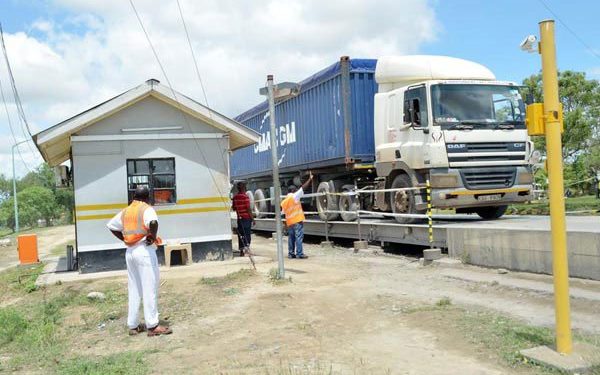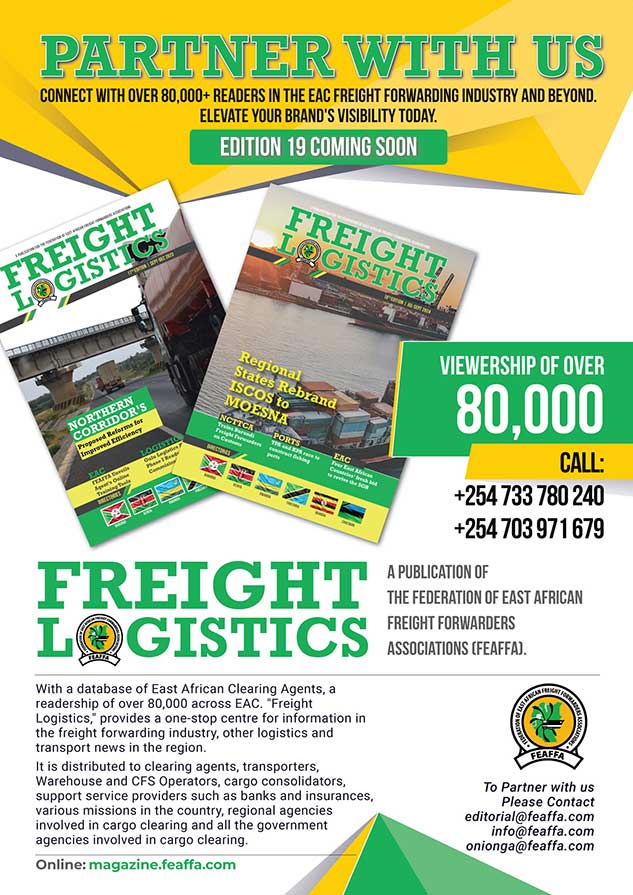A raft of measures on weighbridges and axle load compliance along the Northern Corridor have been consolidated from the first 14 Northern Corridor Transport Observatory reports. This is a monitoring tool that measures 36 indicators which tracks the performance of the port of Mombasa as well as the performance of the corridor.
The consolidated report, which was generated by the Northern Corridor Transit and Transport co-ordination (NCTTCA), recommends a joint initiative in carrying out sensitization campaigns on axle load compliance by the regional stakeholders especially those involved in transport.
NCTTCA will liase with stakeholders to promote voluntary weight compliance across the region. The report also proposes the domestication of the East Africa Community vehicle load control bill by regional countries.
At 95 percent, Kenya leads the regional counterparts in compliance. In 2014 the country did a serious campaign which led to the development of axle load weight control self-regulatory charter.
The charter was developed by agencies involved in cargo clearance after realising that the punitive fines were not deterrent enough to root out overloading.
The document, which sought to commit stakeholders to avoid carrying excess weight, was signed by chief executive officers of 14 organisations including Shippers Council of Eastern Africa, Kenya International Freight and Warehousing Association, Container Freight Stations Association of Kenya and Kenya Transporters Association.
NCTTCA in conjunction with stakeholders in Uganda including Uganda National Roads Authority and the Ministry of Works and Transport has planned to step-up compliance campaigns. According to Aloys Rusagara, Head of Transport policy and planning at NCTTCA, compliance in Uganda is on the rise and stands at 30 percent.
“In Uganda, it is evident that weightbridges axle compliance has not been fully achieved at most of the weighbridges. This calls for roll-out of the implementation of VLC by all the stakeholders and roll-out of media campaigns against overloading,” recommends the report.
The report pushes for development of a “culture of compliance’ among the shippers, logistics chain providers and government entities.
“Broad initiatives such as the signatories to the Port and Northern Corridor Community Charter at Mombasa port would provide appropriate forums,” the report said.
Due to high road damage, the report recommends establishment of a weighbridge along the Nimule-Juba in South Sudan. The report recommends weighing vehicles twice at the point of entry.
“There should be certification of identification of trucks on first weighing to avoid multiple stops at the weighbridges and a comprehensive sensitization of truck drivers on weighing,” said the report.
There is a need to establish multiple weighing lanes at busy sections of the corridor such as at Athi River and Mariakani to reduce traffic congestion. The report also recommends installation of High Speed Weigh In Motion (HSWIM) bridges at busy weighbridge stations.
Truck drivers in East Africa are required to adhere to the harmonised EAC axle load regulations in an effort by partner states to bring down transport costs and check overloading that destroys roads. The law compels truck drivers to observe an axle gross vehicle weight limit of 56 tonnes.
However, Kenya also enforces the axle load limit. Any truck that is flagged for overloading at the HSWIM bridges is required to weigh axle load at the weighbridges.





